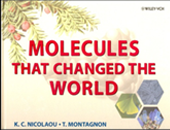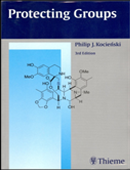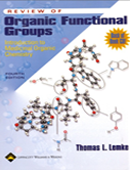K. C. Nicolaou, Tamsyn Montagnon

|
Call no. Ref. QD262 N635M 2008
In this delightfully designed book, K. C. Nicolaou introduces the world’s most important molecules and shows in a fascinating way the role certain compounds have to play in our everyday lives in the fields of drugs, aromatics or vitamins. For example, he tells the story of Aspirin, beginning 3,500 years ago in Egypt, through to its first synthesis and various applications with many entertaining facts and details. Printed in full color throughout and with its oversize format, this is a must for every chemist, natural scientist and anyone interested in the sciences. (Publisher’s note) (Recommended by Dr. Jutatip) |
Philip J. Kocienski

|
Call no. QD262 K76P 2005 The didactic presentation of the material makes this book an essential bench-top tool not only for specialists in organic chemistry, but also for students and all those involved in the preparation of organic molecules. Key Features:- a critical survey of the most used protecting groups, as used by organic chemists- organization based on functional groups: hydroxyl ; diol; carbonyl; carboxyl; amine- special emphasis placed on deprotection conditions applied to complex structures where selectivity is a prime issue- transformations accompanied by key experimental details- examples from the recent literature span a wide domain of organic synthesis- over 500 schemes aid visual retrieval – end-of-chapter list reviews which amplify topics covered. (Publisher’s note) (Recommended by Dr. Jutatip) |
Thomas L. Lemke

|
Call no. RS403 L554R 2003
Designed to ease the transition from general organic chemistry, this self-paced book/CD-ROM review provides background material for formal pharmacy courses in medicinal chemistry. Upon completion of the review, students will be able to draw a chemical structure of simple organic molecules given a common or chemical name, predict solubility of a chemical, and predict and illustrate with chemical structures the metabolism of each organic functional group. The CD-ROM, new to this edition, features practice questions and animations. (Publisher’s note) (Recommended by Dr. Jutatip) |
